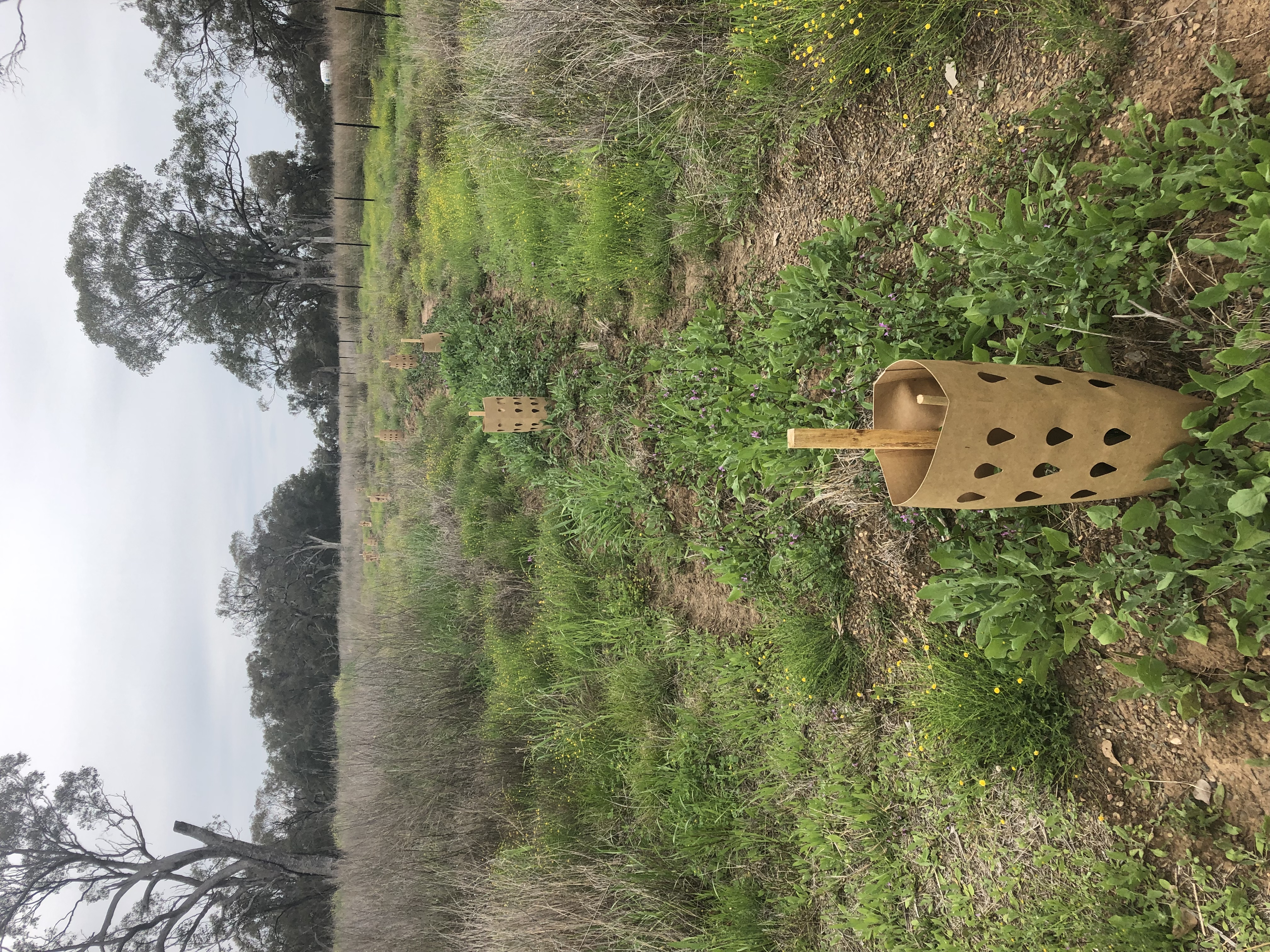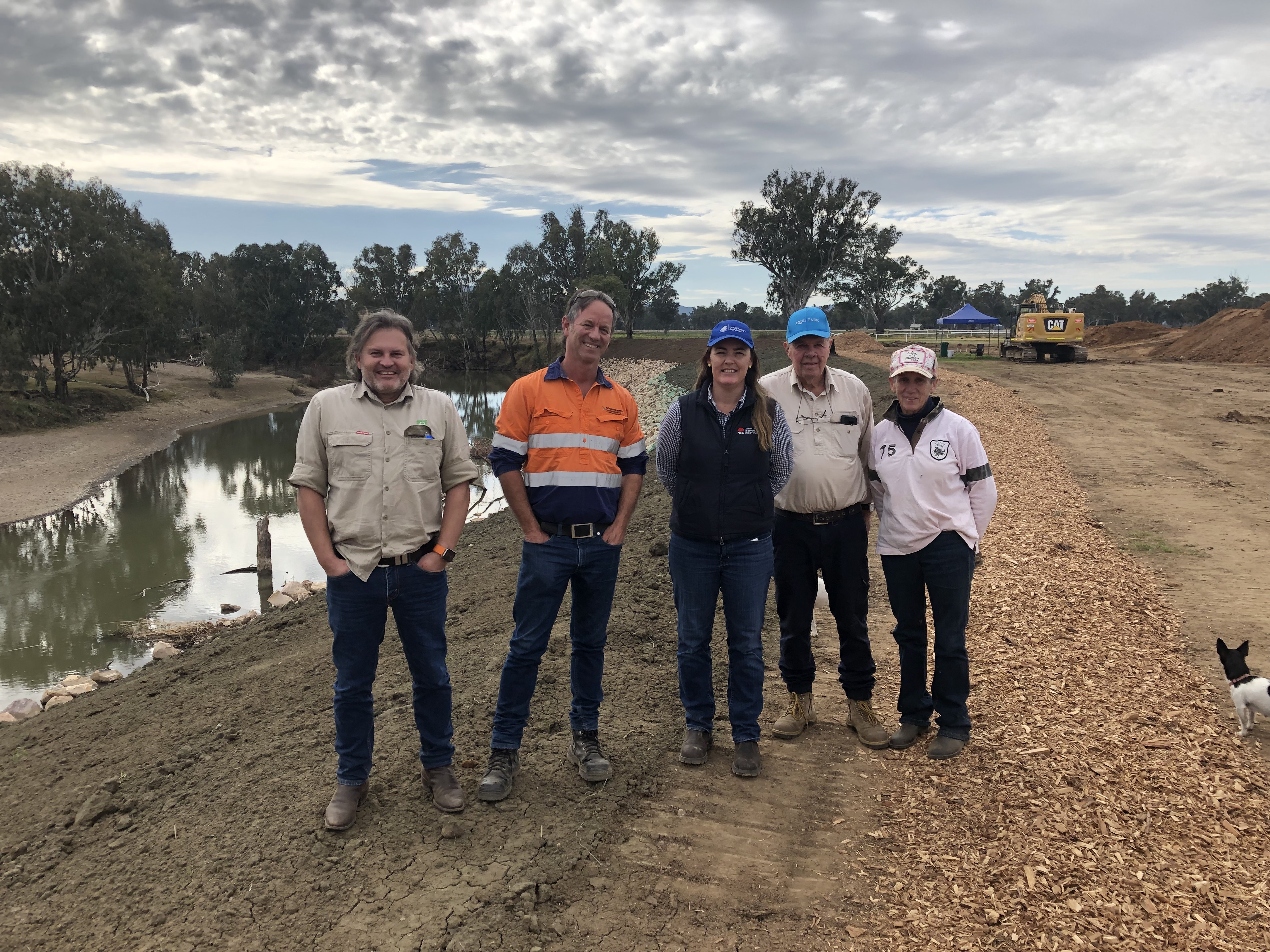Kamilaroi Guda Koalas
This project was finalised on 30 June 2023. Funding applications will no longer be accepted.
A 2 year program to increase and enhance koala habitat around Gunnedah is now complete, protecting crucial habitat to support Gunnedah's declining koala population. The $1 million program has sought to give the local koala population the best chance of survival and recovery in a changing climate. The project is delivered by North West Local Land Services, through funding from the Australian Government.
Gunnedah’s koalas have been in serious decline since at least 2008, largely attributed to prolonged heatwaves in summer and drought. Coupled with the extreme weather, high rates of chlamydia infections have further decreased the population.
The area between Carroll and Gunnedah adjacent to the Namoi River was targeted due to the proximity of permanent water and existing remnant native vegetation and suitable koala habitat.
On travelling stock reserves, 275 hectares of targeted weed control (tiger pear and African boxthorn) and 17 hectares of tree planting took place. These practices increase the diversity of shelter, feed species and age of trees, as well as remove obstacles to koala movement. 50 hectares of improved management practices were also undertaken on private land, which included tree planting and weed control.
To create an important link between habitats, significant remediation activities and revegetation was carried out at a site along the Namoi River, and a wildlife drinker with a permanent water source was installed at another location.
A Local Land Services contractor also carried out a koala presence survey using a detector dog to update previous koala survey data from 2016 and 2017. The findings showed a significant decline in koala activity and will influence where additional surveying will take place over spring and summer this year.
Project partners at the Namoi River restoration site. Rob Porter (Landcare Australia), Damon Telfer (Rock-it Science), Angela Baker (Local Land Services), Kevin Edmonds and Lyn Tongue (Gunnedah Jockey Club).
The project has a significant cultural heritage component which includes the employment of an Aboriginal Community Support Officer, Wally Hammond, who worked closely with the community to increase awareness and engagement in the project and about koalas. Initial consultation with the local Aboriginal community recognised that the Kamilaroi/Gamilaary word for koala should be used, hence including the word ”guda”.

Tree planting at Redbank Travelling Stock Reserve.
For more information contact Angela Baker, Senior Land Services Officer, Gunnedah on angela.baker@lls.nsw.gov.au or 0429 368 693 or Wally Hammond, Aboriginal Community Support Officer, wally.hammond@lls.nsw.gov.au on 0428 432 784.
This project is supported by North West Local Land Services, through funding from the Australian Government’s Environment Restoration Fund.
What has happened to the koalas around Gunnedah?
This film explores what lead to the steep decline in the koala population in the last 15 years and the work of Local Land Services, researchers and community groups who are trying to assist in koala population recovery across the Liverpool Plains.
This film is part of Local Land Services' Kamilaroi Guda Koalas project.
Other koala resources
Koalas in your backyard
Koalas were uplisted by both the Australian Government and NSW Government to endangered in 2022. Inland NSW koalas are under threat due to chlamydia, heatwaves, drought and habitat fragmentation.
We can all do our bit to look after our koalas. Download our factsheet on how you can look after koalas in your backyard.
Planting native vegetation for koalas
Moree region
There are a number of native vegetation species recognised as important food and shelter trees for koalas in the Moree region. Planting these trees will benefit koalas by providing additional food and shelter.
Download the factsheet Planting Native Vegetation for Koalas in Moree PDF, 3481.81 KB.
Gunnedah region
There are a number of native vegetation species recognised as important food and shelter trees for koalas in the Gunnedah region. Planting these trees will benefit koalas by providing additional food and shelter.
Download the factsheet Planting Native Vegetation for Koalas in Gunnedah PDF, 2566.26 KB.
Providing water for koalas
Koalas normally gain the majority of the water they need from the moisture in the leaves that they eat. However, when weather conditions are hot and dry, such as during heatwaves and droughts, koalas may benefit from supplemented free water.
If you have koalas on your property, these guidelines will help you setup a tree accessible watering station for koalas. A tree watering station is preferred because koalas are arboreal animals (they live in trees) and because it will keep koalas safe from potential ground predators.
Download the Providing water for koalas factsheet. PDF, 9540.46 KB
